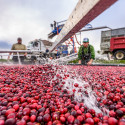Photo gallery A different kind of work party: Practicing ecological restoration at UW Arboretum
Visit the UW–Madison Arboretum on a Saturday morning and you might stumble upon a dedicated group of volunteers helping cut and clear brush, remove invasive plants, or prep for upcoming controlled burns. These restoration work parties, hosted the first four Saturdays from April to December, are an essential part of maintaining one of the crown jewels of campus and the city of Madison. Ecological restoration is the practice of creating and managing healthy native plant communities, and the Arboretum relies on volunteers to support this ongoing and important work.
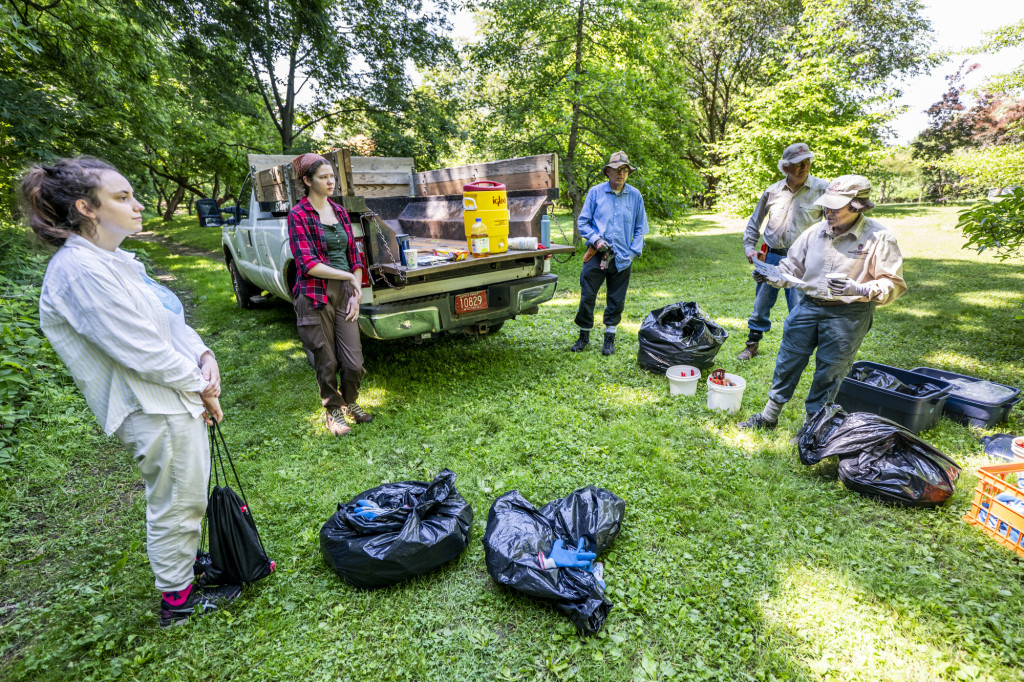
Team Leader Susan Wulfsberg (far right) talks to volunteers about native Wisconsin moths during an educational break at the ecological restoration work party in Gallistel Woods at the UW Arboretum. Photo by: Taylor Wolfram
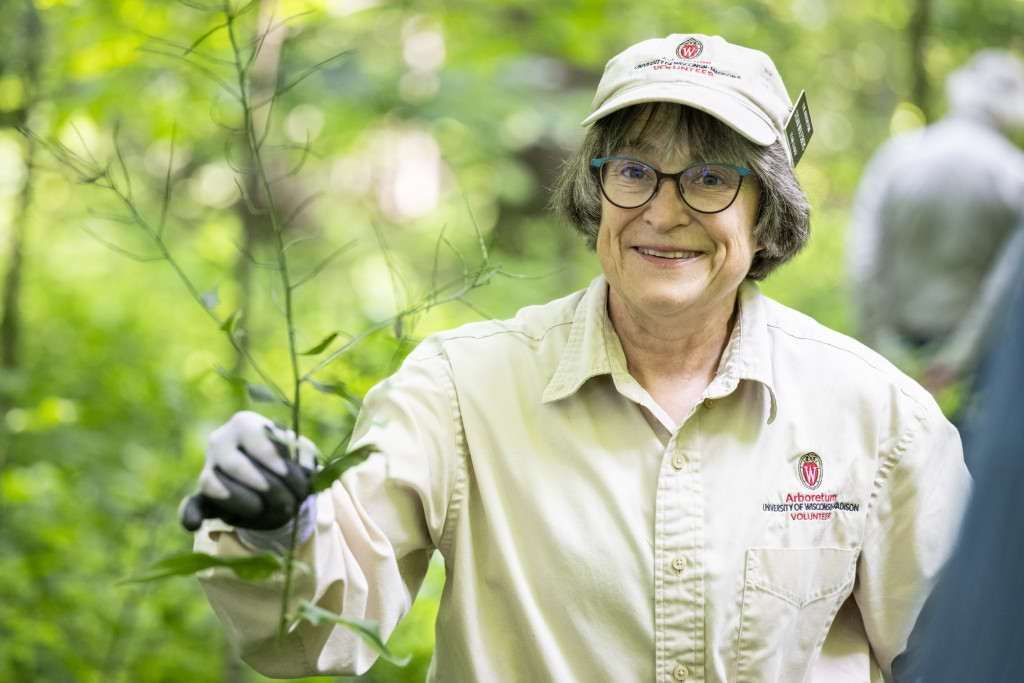
Volunteers were instructed to cut two species of mustard plants—dame’s rocket and garlic mustard—at the base to prevent the spread of the invasive species while maintaining the integrity of the research plot they were working in. Here, Wulfsberg holds up a garlic mustard plant to show volunteers an example of one of the plants to be on the look out for—and remove—from the wooded area. Photo by: Taylor Wolfram
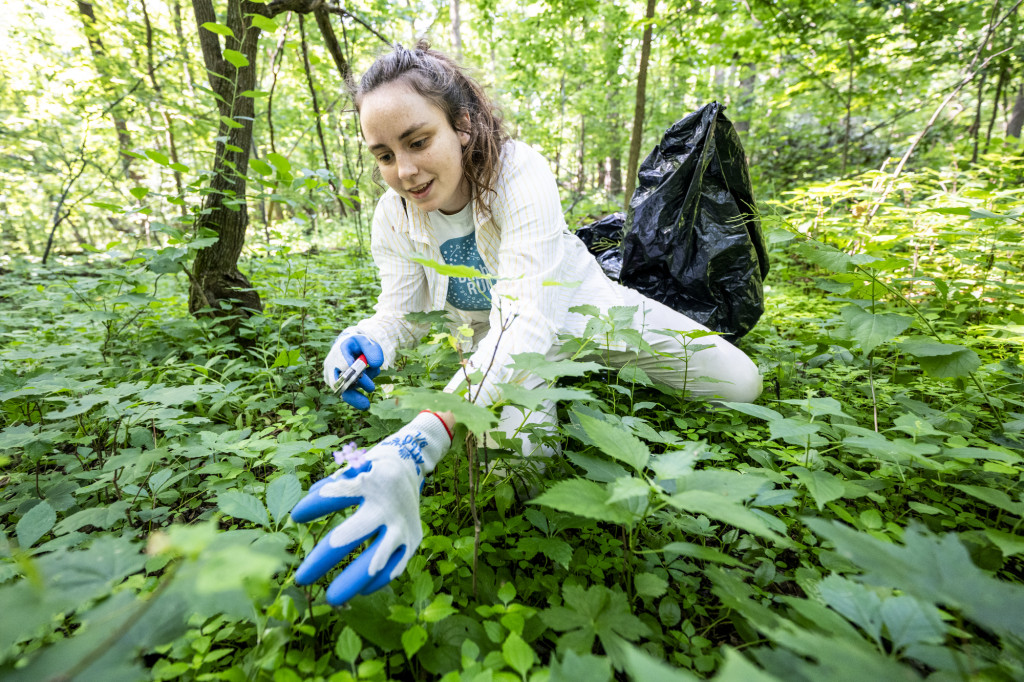
Melissa Langkilde, who works in the Mura Cranberry Lab housed within the UW Department of Plant and Agroecosystem Sciences, reaches for an invasive mustard plant. Ecological restoration practices focus on creating and managing healthy native plant communities. Work parties are a great way to practice ecological restoration, learn about the Arboretum plant communities, and make friends. Photo by: Taylor Wolfram
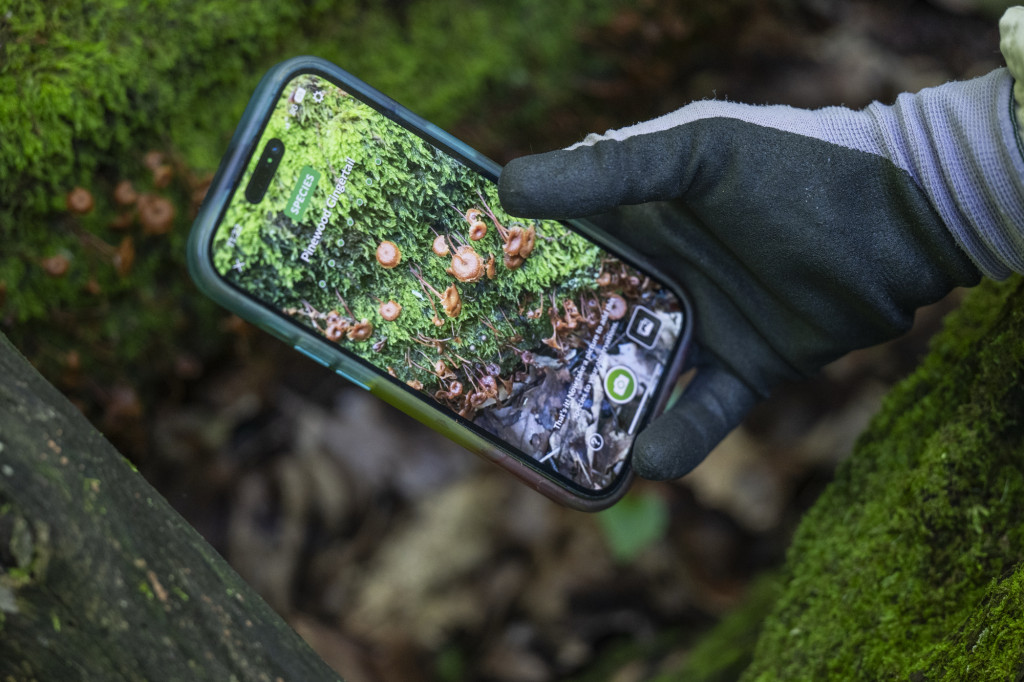
Wulfsberg uses a phone app to identify a type of fungi growing in the Gallistel Woods. Photo by: Taylor Wolfram
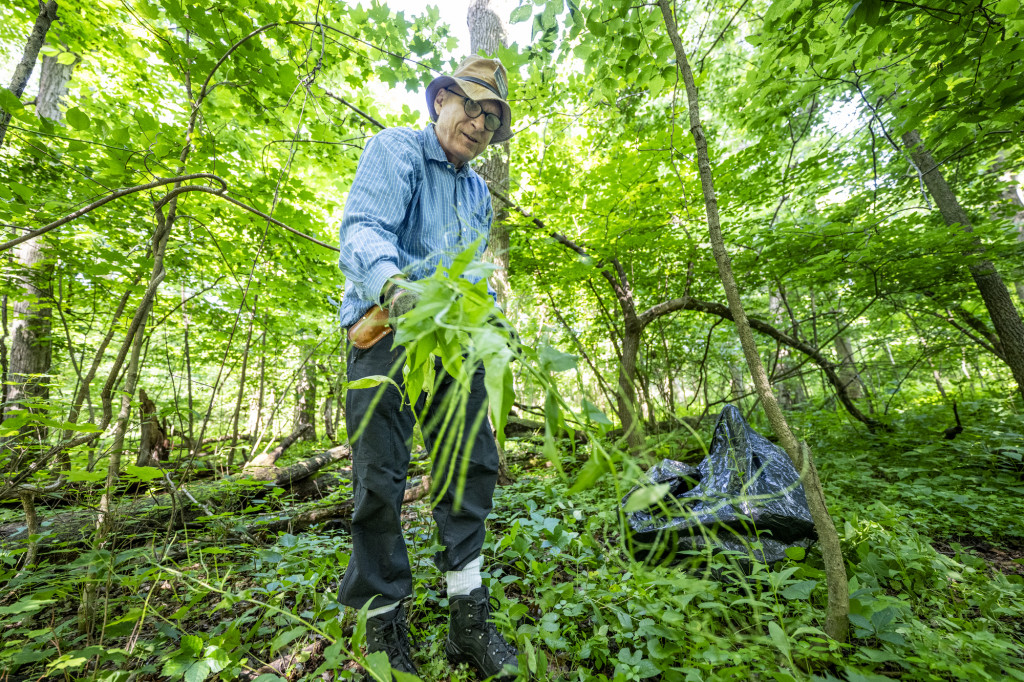
Team Leader David Smith, who spends his weekdays as a catalog librarian with the U.S. Forest Products Laboratory, talks about invasive plants while holding a mustard plant bundle during the work party. Photo by: Taylor Wolfram
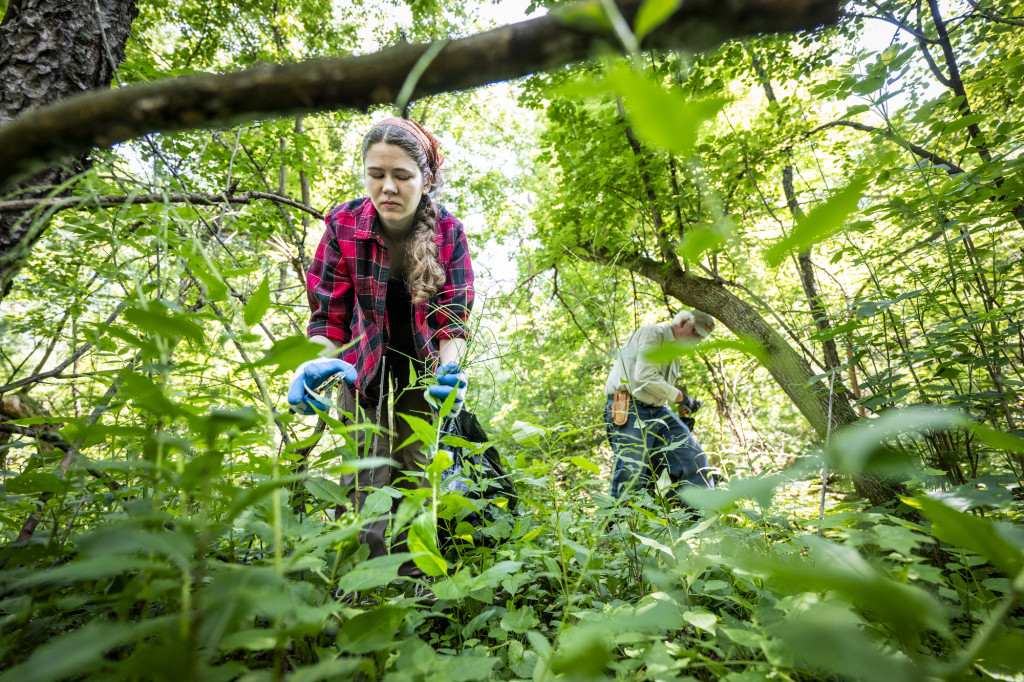
Hannah Massey snips a mustard plant in the UW Arboretum's Gallistel Woods. Massey says participating in work parties “is a good way to get exercise.” Photo by: Taylor Wolfram


